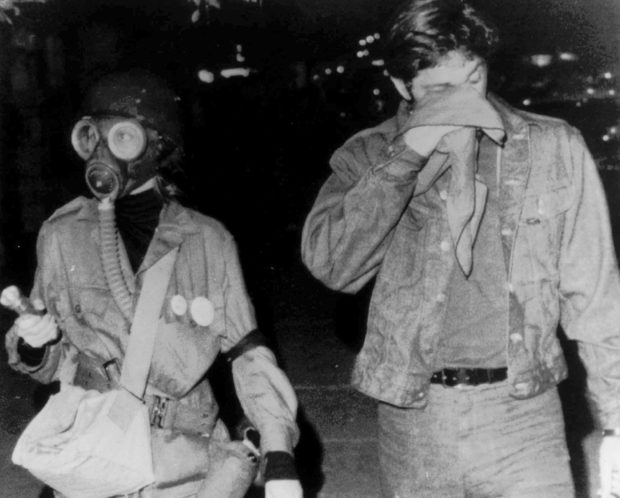
Asthma medication can widen the airways and help someone breathe. The aim is to remove all traces of chemicals to prevent further eye damage.Ī person who has breathing problems after tear gas exposure may need oxygen. If people have burning or watering eyes, they can rinse them for 10–15 minutes with clean water. The standard treatment is to rinse all traces of the chemical off the skin, cool with water, and apply a dressing. People who experience chemical burns need to seek medical attention. They should also wash glasses or jewelry before they wear them again. They can use a lot of water to dilute the tear gas substances quickly.

People should wash their face and body with mild soap and water to remove the chemicals.
#TEAR GAS MASK PROFESSIONAL#
They can seal these clothes in a plastic bag and arrange for professional disposal. A dust mask and goggles may offer some protection from tear gas.Ī person should remove contaminated clothing as quickly as possible, without pulling it over their head. They should also cover their mouth and nose with a clean cloth or the inside of a jacket.
#TEAR GAS MASK WINDOWS#
If there is tear gas outdoors, people should stay inside a building with the windows and doors shut. They should leave the building if they are indoors, get fresh air, and try to find higher ground to stay above the chemicals. These disabilities included:įirstly, people need to get away from the tear gas. In this study, 58 people reported a permanent disability after tear gas exposure. The second death involved a tear gas canister impact that caused a fatal head injury. In the first, the release of tear gas in a person’s home caused death by respiratory failure. There were two recorded fatalities out of 5,910 people in this study. The chemicals and canisters used to release them have caused severe injuries, permanent disability, and death. These include:Ī 2017 study of data collected over 25 years looked at tear gas effects on the body. However, scientists still do not know enough about the lingering effects of tear gas on the body.Įxposure to tear gas indoors, or in large amounts, may have serious health effects. If a person leaves the area where tear gas is present, and their symptoms go away soon afterward, their risk of long-term injury is low. These include firing tear gas from a distance, only using it outdoors, and using the lowest possible strength chemical mix. There are strict guidelines for tear gas use in public. However, they are commonly used by police or military personnel to break up crowds, or at protests to stop the movement of people. These chemical weapons are now banned in warfare.


Tear gas was initially developed as a chemical weapon for military use. Exposure to a more concentrated version or prolonged exposure can worsen symptoms. Other names for types of tear gas include mace, pepper spray, capsicum spray, and riot control agents. Tear gas may consist of many different chemicals. This is why it mainly affects moist areas of the body, such as the eyes, mouth, throat, and lungs. These substances react with moisture to cause pain and irritation.
/gasmask-teargas-58b5b2f73df78cdcd8ac2220.jpg)
It consists of solid or liquid chemicals, usually within a spray or powder. Image credit: KATHRYN ELSESSER/AFP via Getty Imagesĭespite the name, tear gas is not a gas. Share on Pinterest Tear gas may cause watering, burning, and redness of the eyes.


 0 kommentar(er)
0 kommentar(er)
